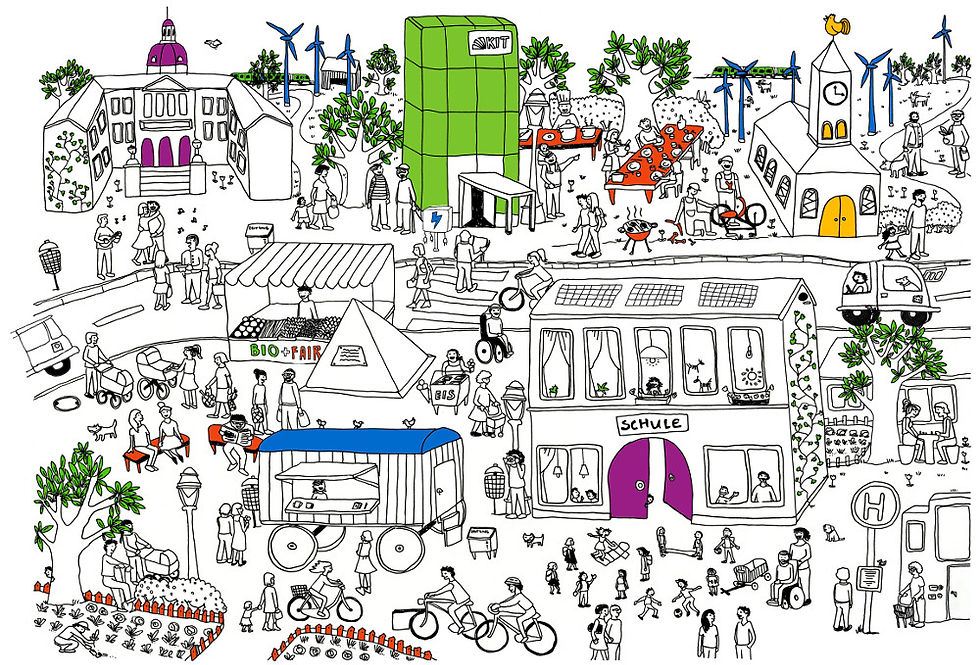How do we create future urban living?
- eefjegrinsven

- 13 okt 2014
- 2 minuten om te lezen
While I’m walking trough different shopping streets in the Netherlands, it seems like they are all the same. I’m wondering, how we will be living in the future?
I see a lot off big buildings destroying the sight to above. But slowly the urban area’s are taking over outside the centre. The centre is no longer the place to be if you visit and other city but you have to look for the neighbourhouds outside the centre, the urban places where small entrepreneurs are joining forces in outstanding concepts.
Creativity, innovation and new gadgets or manners of using something is the new view. Strijp S, Makrthal Rotterdam, urbancampsite Amsterdam all these innovative things are coming up and will be our future. We need to start working together with the city planners and get together to think about the future. Food, fashion, work, living and play need to be combined together to get the city moving. We need the extra time to be creative and not to sit in the car for 1,5 hours to get home. Think of all the ideas that can be work out in all these lost hours. We need to change our mentallity and work together. We don’t need to fall first to be innovative. We have to think forward. We are wasting our nature and believe in something not visual. We need to believe in what we see and react to this. People need to know that how you live is who you are. So decide who you want to be and live to it. Go out of the centre and use your space for you lifestyle.
Technology and social networks will shape urban spaces: "The sense of community is already altering, but will evolve much more in the future, and encompass a sense of space and place beyond our current understanding of social networks both in the real and virtual worlds. We will have to consequently re-evaluate … the way we live and use urban space. Urban design will have to necessarily undergo a paradigm shift to align with these new behaviours."
Such changes will have a special impact on architects and urban planners who must become, argue some, more innovative and flexible, with a more open and holistic approach to their work. Philipp Rode, executive director of the Cities Programme research unit at the London School of Economics says: "A new holistic approach is central to the sustainability agenda. There should be collective decision making from both the public and private sector, free of managerial constraints.''
Such flexibility must also be apparent in designing new buildings to be "future proofed" and cater for ageing and expanding families: "Architects must accept the challenge of incompleteness and stop thinking in terms of buildings as precise objects. Design must be more adaptable,'' says Malcolm Smith, Arup's director of urban design.

Source: The guardian







コメント